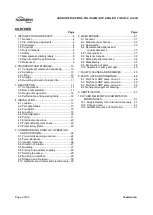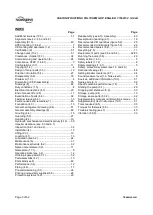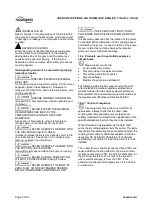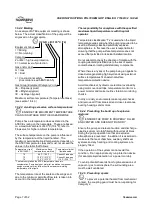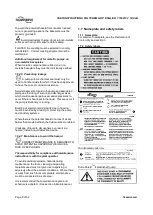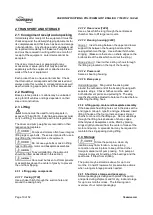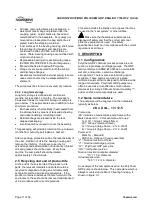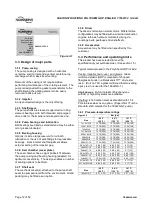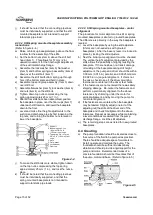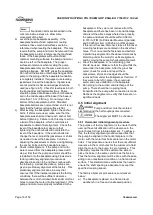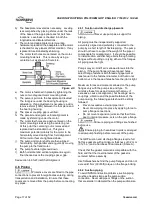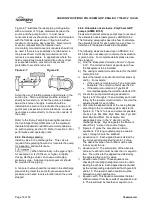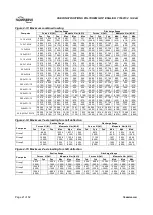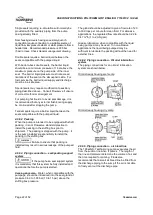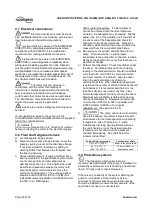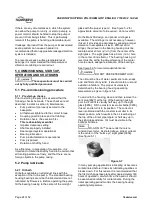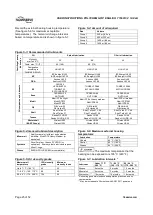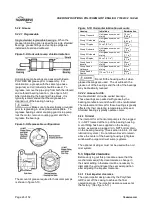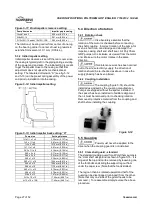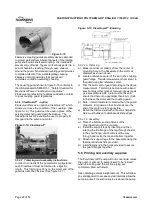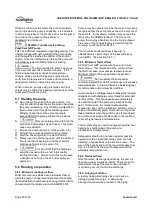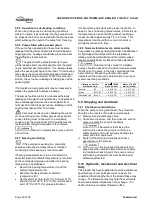
USER INSTRUCTIONS POLYCHEM GRP ENGLISH 71569132 12-04A
Page 15 of 52
flowserve.com
j) It should be noted that the connecting pipelines
must be individually supported, and that the stilt
mounted baseplate is not intended to support
total static pipe load.
4.3.3.2 Stilt/spring mounted baseplate assembly
instructions
(Refer to figure 4-4.)
a) Raise or block up baseplate/pump above the floor
to allow for the assembly of the stilts.
b) Set the bottom nuts (item 4) above the stilt bolt
head (item 1). This allows for 51 mm (2 in.)
upward movement for the final height adjustment
of the suction/discharge flange.
c) Assemble the lock washer (item 6) flat washer
(item 5) and bottom spring/cup assembly (item 2)
down over the stilt bolt (item 1).
d) Assemble the stilt bolt/bottom spring up through
hole in the bottom plate and hold in place.
e) Assemble top spring/cup assembly (item 3) down
over stilt bolt.
f) Assemble flat washer (item 5), lock washer (item 6)
and nuts (item 4) on the stilt bolt.
g) Tighten down top nuts, compressing the top
spring approximately 25 mm (1 in.).
h) After all four stilts have been assembled, position
the baseplate in place, over the floor cups (item 7)
under each stilt location, and lower the baseplate
down to the floor.
i) Level and make final height adjustments to the
suction and discharge pipe by first loosening the
top nuts, and turning the bottom nuts to raise or
lower the baseplate.
Figure 4-4
j) To make the stilt bolts more stable, tighten down
on the top nuts, compressing the top spring
approximately 25 mm (1 in.), and lock the nuts in
place.
k) It should be noted that the connecting pipelines
must be individually supported, and that the
spring mounted baseplate is not intended to
support total static pipe loads.
4.3.3.3 Stilt/spring mounted baseplates - motor
alignment
The procedure for motor alignment on stilt or spring
mounted baseplates is similar to grouted baseplates.
The difference is primarily in the way the baseplate is
leveled.
a) Level the baseplate by using the stilt adjusters.
(Shims are not needed as with grouted
baseplates.) After the base is level, it is locked in
place by locking the stilt adjusters.
b) Next the initial pump alignment must be checked.
The vertical height adjustment provided by the
stilts allows the possibility of slightly twisting the
baseplate. If there has been no transit damage
or twisting of the baseplate during stilt height
adjustment, the pump and driver should be within
0.38 mm (0.015 in.) parallel, and 0.0025 mm/mm
(0.0025 in./in.) angular alignment. If this is not
the case, check to see if the driver mounting
fasteners are centered in the driver feet holes.
c) If the fasteners are not centered there was likely
shipping damage. Re-center the fasteners and
perform a preliminary alignment to the above
tolerances by shimming under the motor for
vertical alignment, and by moving the pump for
horizontal alignment.
d) If the fasteners are centered, then the baseplate
may be twisted. Slightly adjust (one turn of the
adjusting nut) the stilts at the driver end of the
baseplate and check for alignment to the above
tolerances. Repeat as necessary while maintaining
a level condition as measured from the pump
discharge flange. Lock the stilt adjusters.
e) The remaining steps are as listed for new grouted
baseplates.
4.4 Grouting
a) The pump foundation should be located as close to
the source of the fluid to be pumped as practical.
There should be adequate space for workers to
install, operate, and maintain the pump. The
foundation should be sufficient to absorb any
vibration and should provide a rigid support for the
pump and motor. Recommended mass of a
concrete foundation should be three times that of
the pump, motor and base. (Refer to figure 4-5.)
Figure 4-5
1. Stilt bolt
2. Bottom spring 3 ¼ in.
(83 mm) OD x 4 in.
(102 mm) floor cups
3. Top spring 2 in. (51 mm)
OD x 4 in. (102 mm) floor
cups
4. Nuts
5. Flat washer
6. Lock washer
7. Floor cup


